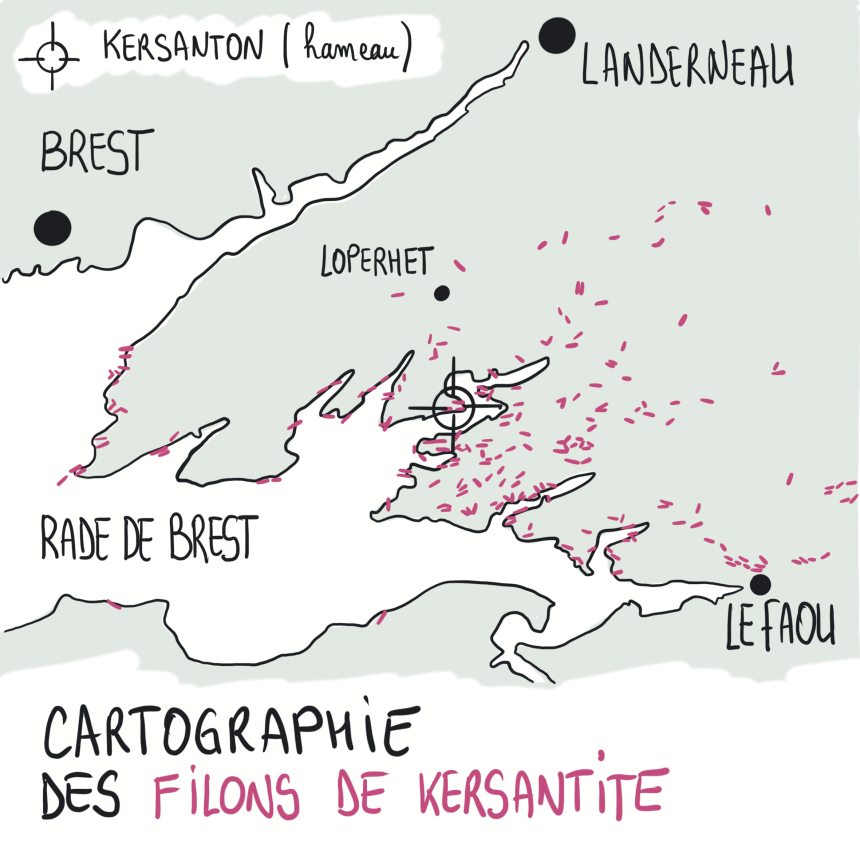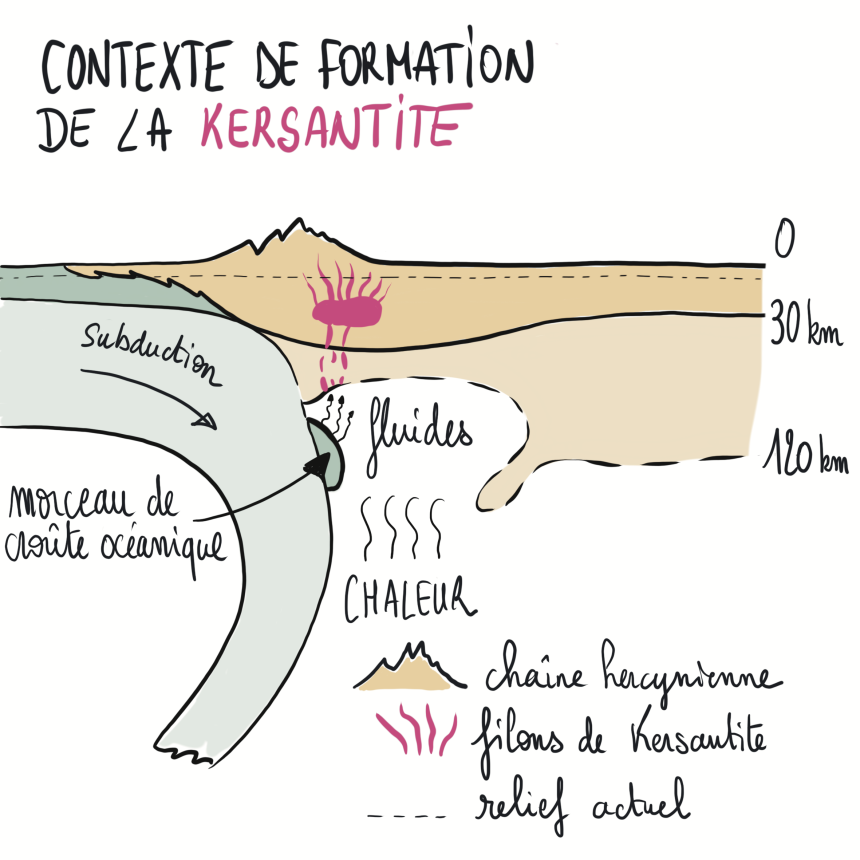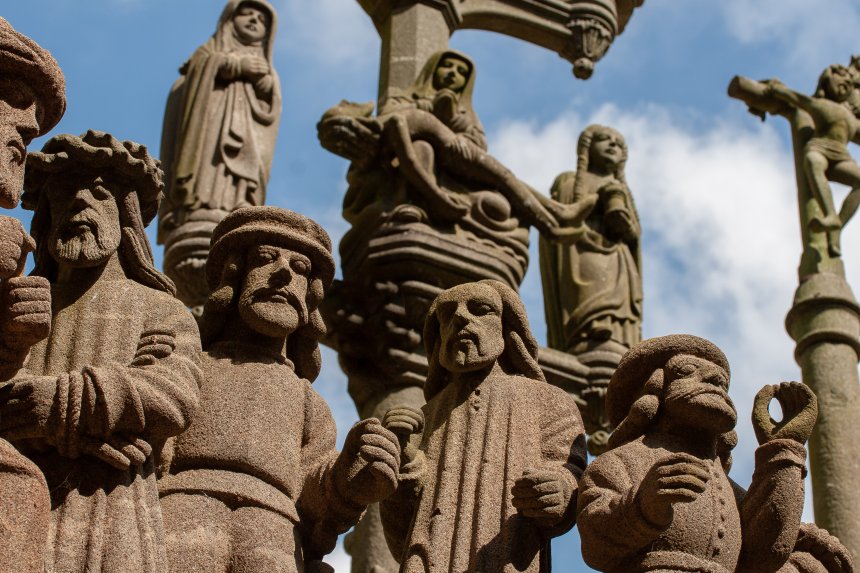Stone : kersantite
Type : microcrystalline magmatic rock
Age : between 330 and 310 million years
Quarry : Rhun-Vras, l’Hôpital-Camfrout (Finistère) (not active since 1987)
Good or Bad Veins?
These kersantite veins are now visible at the surface due to erosion. They form a very complex network, as shown on the simplified map of the area. Their width varies greatly—from one meter to several tens of meters. In past centuries, there were as many quarries as there were veins. Today, extraction is no longer economically viable because the resource is too fragmented. This rock is no longer exploited.
Originally, a Magma
Kersantite is a magmatic dike rock mainly composed of black micas and small rod-like plagioclase crystals—it is a type of lamprophyre. Its color ranges from black to gray. This rock formed from the cooling of magma. That magma originated from a melting zone estimated to be in the Earth’s mantle, about 80 km deep, and was emplaced at depths of 7 to 11 kilometers. Geologically, it is associated with the microgranodiorite of Logonna (see installation 14).
An International Name with Local Roots
Its scientific name derives from local toponymy. Kersanton is the name of a small hamlet in the commune of Loperhet, located southeast of Brest. Locally, it is known as "Kersanton stone"—naturally. However, it is sometimes incorrectly referred to as “Kersanton granite,” which is not geologically accurate.
"Soft to Carve, but Resistant to Weathering"
These are the two key qualities that have built its reputation. Kersantite stands out in sculpture and traditional building, where it is often paired with Logonna stone, its geological cousin. Kersantite was also widely used in lighthouse construction. The lighthouse on Île Vierge in Plouguerneau (Finistère)—the tallest in Europe—is a proud example, being made entirely of kersantite.



